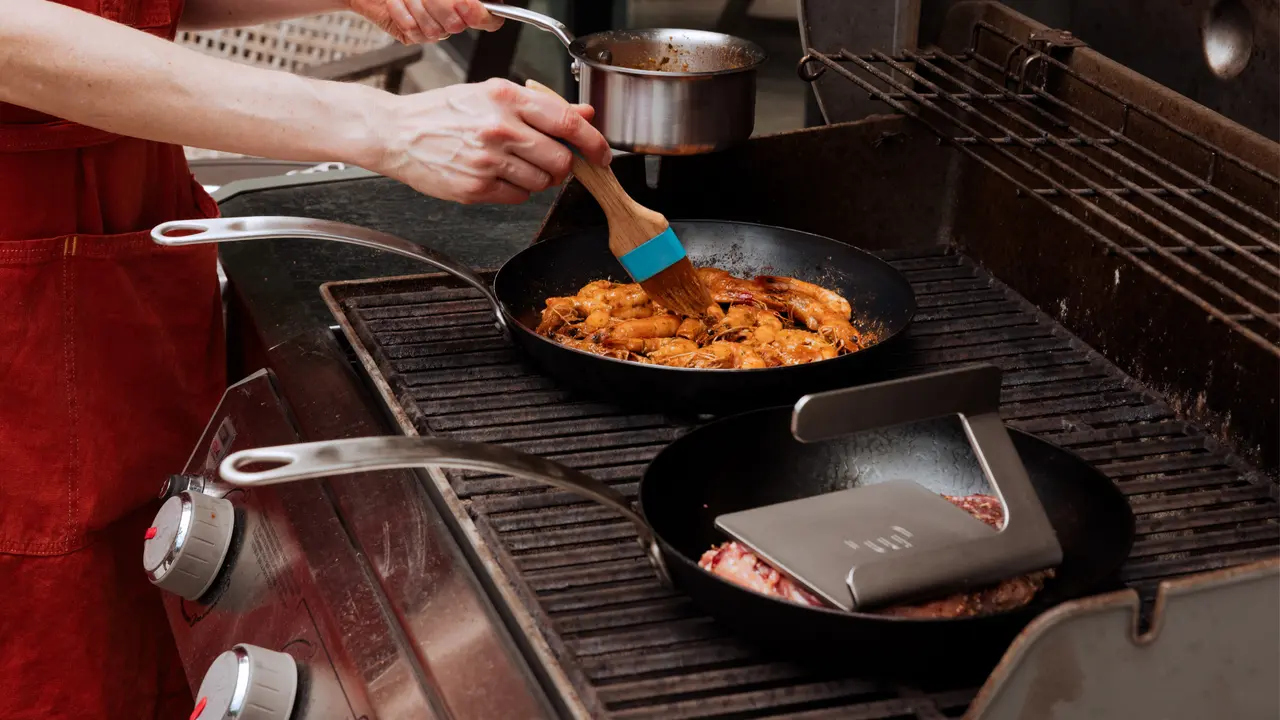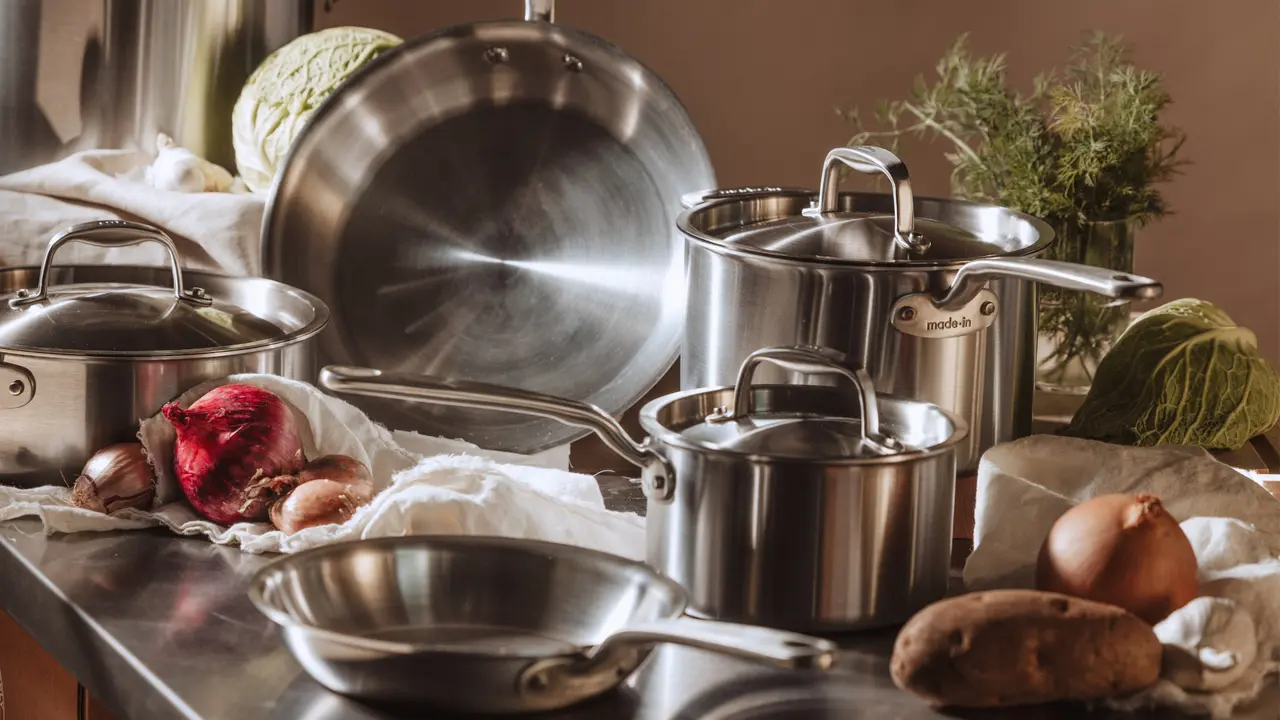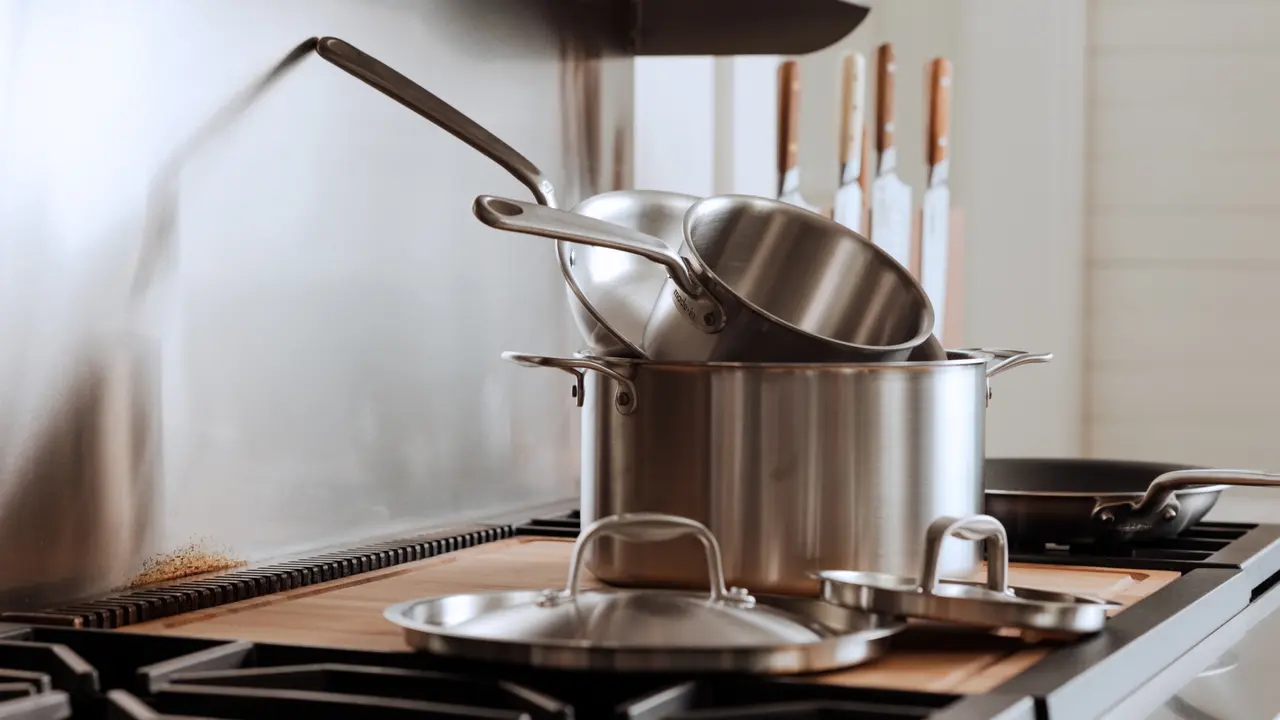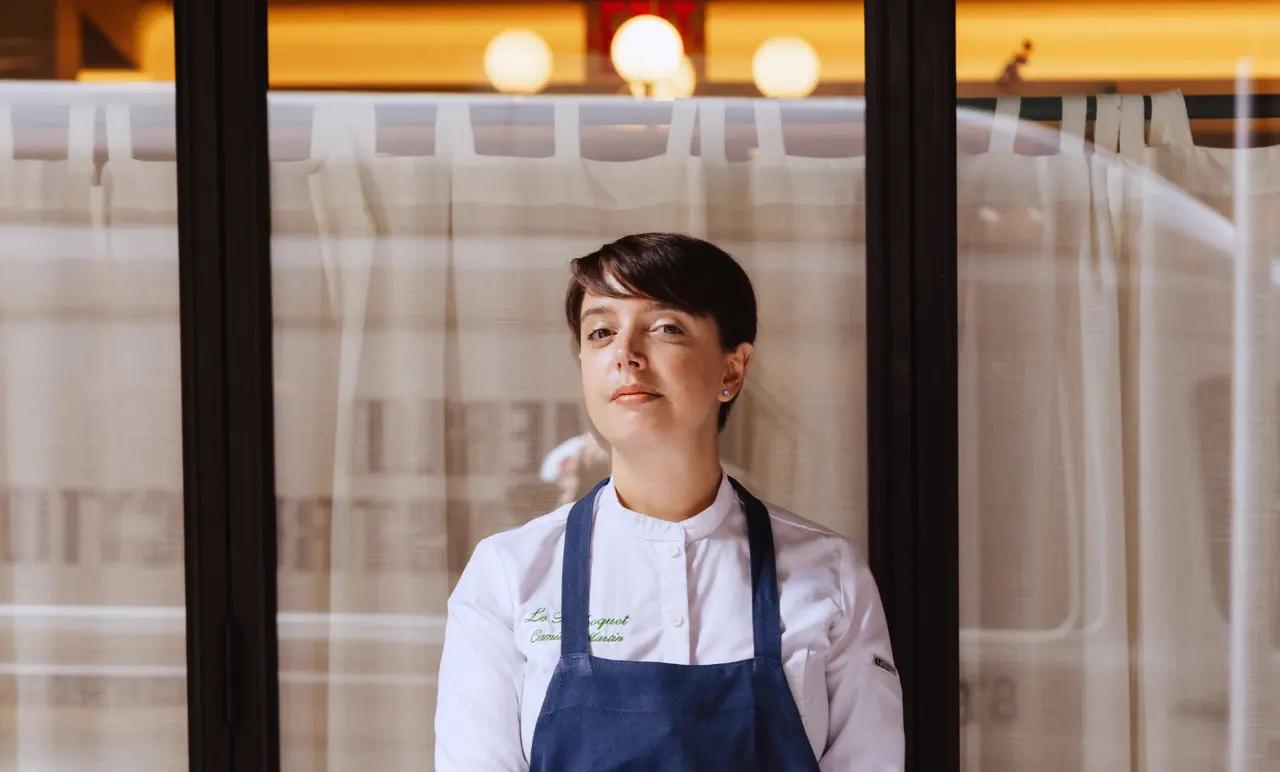You know all the famous French recipes. Now, you need the classic pots, pans, and gadgets to get the job done. Here’s your Made In recommendations for the top 5 French cooking tools.
The French are not only renowned for their rich, decadent food and oh-so-refined recipes. Top French chefs are also emulated for their incredible sense of preparation. They always have the best cookware, tools, and accessories in the world in order to match their impeccable craft. So, it’s only natural that we train our Made In comrades in the art of stocking the perfect ‘French’ kitchen.
Although a complete cookware kit is always a smart start, European experts have so much more in store. Let’s take a look at the most sought-after essentials no French chef would be caught without. Along the way, we’ll explain how each item is used and why it can help transform your food from fair to fabulous.
It’s time to take stock of what’s packing in your pantry and lining your shelves. Go ahead—take a look. Then come back, and let’s get ready to shop!
The origin of the ‘French kitchen’ copycat
Flip through the channels nowadays, and television is overrun with a home makeover and kitchen design shows. From House Hunters and Property Brothers to Flip or Flop and Fixer Upper, we hear story after story of homeowners looking for the perfect ‘French kitchen.’ So, what exactly are they looking for? Is it the size? The storage? The aesthetic?
Whether it’s a beautiful rustic kitchen in the country or a modern, elegant space in the city, French cooks always seem to have all the best goodies and gadgets. So when people get inspired by the style, we wonder if it's really the products they’re pining for...
Of course, this country is one of the fashion capital of the world, and that sophistication translates to all areas of life and home. Folks in France are known for their ‘ready-to-prep’ array of high-end cutlery, pots, pans, utensils and the like. Not to mention, their décor is always dressed to the nines with the ideal balance of rustic and refined.
Jealous yet? Don’t be. You can find all their awe-inspiring kitchen designs by browsing a few Pinterest boards. Let’s worry about the main event: kitchen tools.
Top 5 French Cooking Tools
To steal their signature style, you need to know which kitchen tools every 3-star Michelin chef needs. While the French are known for having lots of cool gadgets designed for their wine, cheese, and iconic dishes, let’s start with the top 5 essentials.
1. A Carbon Steel Pan
Carbon steel pans are incredibly versatile thanks to their unique blend of carbon and iron. They’re similar in weight to stainless steel, but food won’t stick to the pan, making them easier to clean. And while carbon steel is actually more akin to cast iron, the latter is super heavy and slow to heat. Basically, the French prefer carbon steel pans because they marry the best of both worlds.
What’s there to know? Carbon steel is:
- Black in appearance. It’s sleek, fancy and a perfect complement to any style kitchen décor.
- Relatively lightweight. Feel free to give food a toss or move your pans across the range without worry.
- Great for sautéing. Since carbon steel pans have sloped edges, they make it easy to cook proteins and sauces together.
- Sort of nonstick. It’s not exactly your Mom’s trusted Calphalon, but a decent match. Carbon steel is very forgiving with eggs and other sticky substances.
- Quick to heat. Unlike thick, heavy cast iron, this metal mixture reacts dependably to the heat source, making it easy to alter temps at a moment’s notice.
What should you cook in a carbon steel pan? Give it a try for your morning eggs, dinnertime steak, veggie stir-fry or other stovetop favorites.
2. A Chef’s Knife
You mean, the knife used by a seasoned chef? Not exactly. Take a look at any decent cutlery set, and you’ll notice a chef knife is relatively large in size (8”-10”) with a pointy tip and slightly curved blade edge. You can also purchase one of these bad boys all by its lonesome from any quality coutelier (or department store) in stainless steel, carbon steel, ceramic and other combinations of forged metal.
So, what’s so special about this specific style of knife? It’s unbelievably versatile. Whether you’re dicing up tomatoes, chopping parsley, slicing meats or mincing onion, it’s got just the right weight and body to complete any prep task. Thanks to its slightly curved design, you can also roll the blade back and forth, just like the pros.
What should you chop with your chef’s knife? The world is your oyster. Actually, don’t use it for oysters! A chef’s knife is ideal for tackling big tasks (like dismantling a chicken or cuts of beef) or the little stuff (like fruits, veggies, and herbs).
3. A Cheese Knife Set
If you missed our awesome articles on Thiers knife-making and the finest French cheeses, be sure to check them out. This recommendation will make a whole lot more sense!
Basically, the French are famous for their affinity for wine, cheese and enjoying life’s pleasures right alongside mother nature. Whether they’re sitting at an outdoor bistro table in Paris or strolling through a vineyard near Colmar, the French always come prepared!
A knife expressly made for slicing and dicing cheese is exactly what you need to handle France’s many homegrown varieties. Cheese knives are typically broken down into two types: soft and hard. Many Frenchmen have been known to grab a hard cheese knife and use it as an impromptu wine opener in a pinch! Very resourceful. No matter which style you choose, remember these traits:
- The best are made in Thiers. With quality materials and generations-old craftsmanship, French-made knives are among the best in Europe (and beyond).
- Soft cheese knives resist sticking. Don’t you hate when a regular knife makes a mess of your yummy wheel of Camembert or Brie? Use a soft cheese knife—usually with holes in it—to prevent sticking.
- Hard cheese knives are tough. A hard cheese knife is designed for pressed cheeses like Comte or Salers. Some are short and look like a spatula, allowing you to slice deep without getting stuck.
4. Herb Shears
They may seem so ‘non-essential.’ But herb scissors are the kind of tool that set apart the rookies from the ‘real’ French chefs. Let’s face it: French cuisine is all about the details. The fresh, local ingredients, slowly simmered sauces, delicate desserts, and the like.
In order to elevate your cooking, you need the kind of accessories that inspire creativity as much as they perform practical functions. Herb shears look like a regular pair of scissors, but kept in your kitchen, they’re on hand to finely snip your essential herbs, spices, and other delicate ingredients. If the blades are sharp enough, you can even use them to help refine the presentation of your classic ratatouille veggies.
Here’s what’s snipping in most chef’s kitchens:
- Parsley, basil, mint, dill and other small herbs
- Chicken, beef, pork or other animal trimmings
- Plastic or cardboard packaging (super convenient)
5. A French Oven
Like a prized heirloom, French women are known to pass down their ‘French ovens’ for generations. Even though Americans call them ‘Dutch Ovens’ (like the famous Le Creuset variety), they’re actually made in France and are distinguished by their nonstick enamel layer. Exceptionally hardwearing, these all-purpose pots can be used on the stovetop or inside the actual oven. Their key characteristics include:
- Large, heavy construction
- A tight-fitting lid
- Cast iron core
- Protective enamel coating
- Round shape
Why is it so essential when cooking French cuisine? Think of beef bourguignon, coq au vin, cassoulet, bouillabaisse and beyond. Many classic French dishes require cookware that can accommodate slow cooking (like braising) while still delivering heavy-duty, long-lasting performance. That’s what makes the ‘French oven’ an absolute necessity with plenty of uses.
Think you’re ready for the big time? Channel your inner Frenchie with Made In cookware at your side.




























